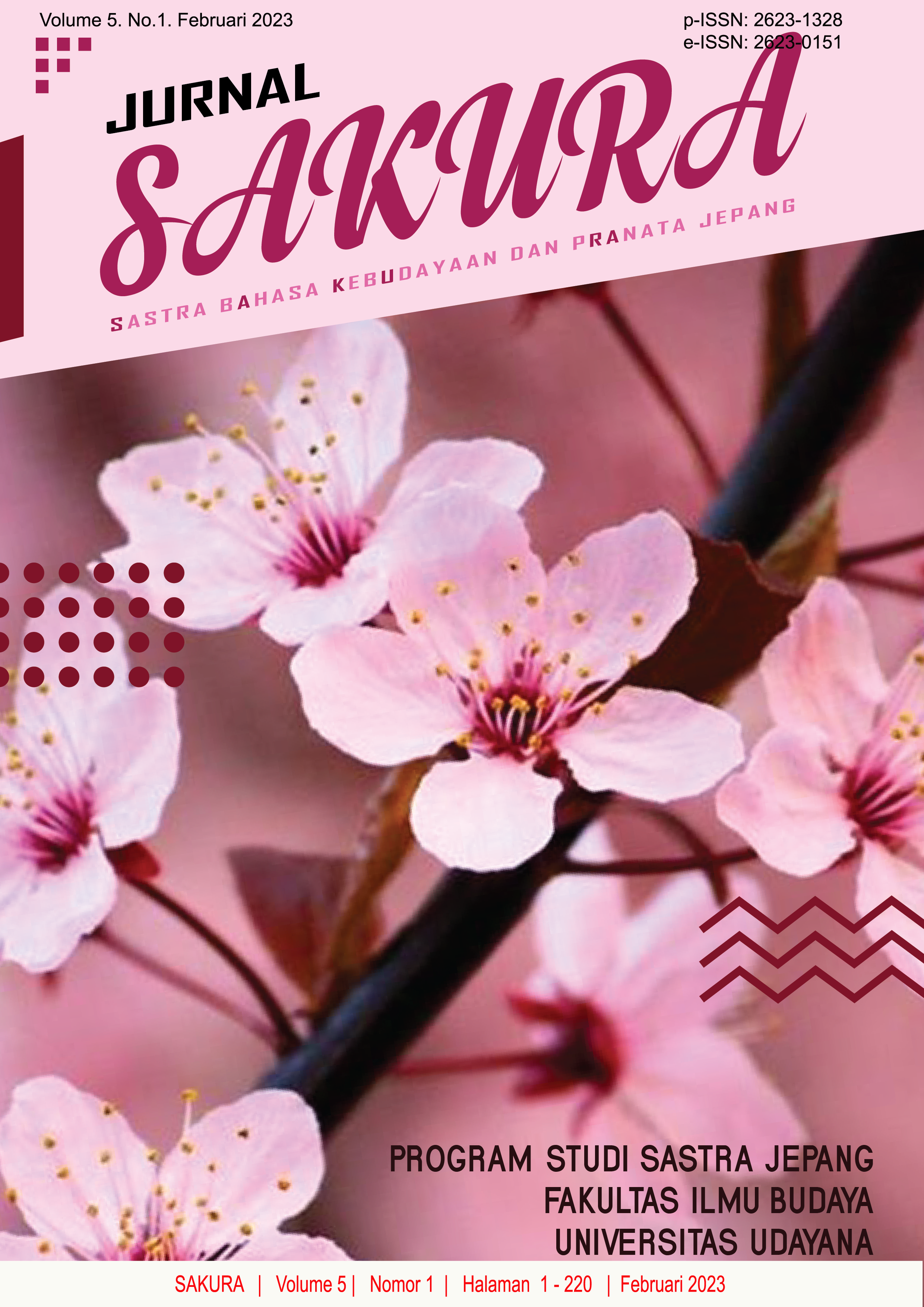Pemetaan Restoran Jepang dan Kuliner Milenial di Surabaya
Abstract
The food that a person consumes has an influence in determining identity, existence, and legitimacy. As something that is important and influential for humans, food generally has characteristics to distinguish it from other foods. In this context, Japan has uniquely Japanese food that distinguishes it from food from other countries. Therefore, Japan as one of the countries that utilizes popular culture as its export commodity uses food as a tool of cultural diplomacy. This study examines the relationship between culinary choices among millennials and gender at Japanese restaurants in Surabaya. Through an interpretative quantitative method of studying Japanese culinary culture, the data will be mapped, interpreted, and then studied in depth the relationship between culinary choices among millennials and gender in Japanese restaurants in Surabaya. The results of the study read with the concepts of Japanese pop culture, especially about shoku bunka (culinary culture) and gender. So that the output is in the form of knowledge about the existence of gender that enters the realm of food and influences the choices of young millennials in determining the food menu at Japanese restaurants in the city of Surabaya.
Downloads
References
Basaran, G., & Sunnetcioglu, S. (2021). Turkish anime viewer’s approach to Japanese cuisine culture. Journal of Ethnic Foods (2021) 8:8. Retrieved from http://doi.org/10.1186/s42779-021-00085-5
Bestor, Theodore C. dan Bestor, Victoria Lyon. Cuisine and Identity in Contemporary Japan. Journal of Association For Asian Studies, Volume 16:3 Food, Culture, and Asia (2011).
Farrer, J., Wang, C., de Carvalho, M. R., Vyletalova, L., & Hess, C. (2017). Japanese Culinary Mobilities Research: The Globalization of the Japanese Restaurant. Foods & Food Ingredients Journal Japan, 222(3), 257–66. diakses melalui https://www.academia.edu/34468960/Japanese_Culinary_Mobilities_Research_The_Globalization_of_the_Japanese_Restaurant
Janeta, A., & Santoso, S. O. (2018). Faktor-faktor yang mempengaruhi pemilihan makanan pada remaja di Surabaya. Jurnal Hospitality dan Manajemen Jasa, 6(1). Diakases melalui https://publication.petra.ac.id/index.php/manajemen-perhotelan/article/view/6399/5818
Lusiana, Y., Laksono, P. M., and Hariri, T. (2020). Self-Styling, Popular Culture, and the Construction of Global-Local Identity among Japanese Food Lovers in Purwokerto. I-Pop: International Journal of Indonesian Popular Culture and Communication, 1(1), 21-40. http://doi.org/10.36782/i-pop.v1i1.33
Kostikova, L. P., Prishvina, V. V., Ilyushina, A. V., Fedotova, O. S., & Belogurov, A. Y. (2018, March). Culture in teaching English as a foreign language. In 2nd International Conference on Culture, Education and Economic Development of Modern Society (ICCESE 2018) (pp. 13-17). Atlantis Press. https://www.atlantis-press.com/proceedings/iccese-18/25893858
Kramsch, C. (2013). Culture in foreign language teaching. Iranian Journal of Language Teaching Research, 1(1), 57-78. https://eric.ed.gov/?id=EJ1127430
Kumakura, Isao. The Globalization of Japanese Food Culture. diakses melalui https://www.kikkoman.co.jp/kiifc/foodculture/pdf_01/e_006_007.pdf pada 1 Juli 2022.
Melvin de Kuyper (2014). The Taste of Japan: Connections between local dishes and travel in the Contemporary Food Culture of Japan diakses melalui https://studenttheses.universiteitleiden.nl/access/item%3A2658871/view
Suhardini, I.R. (2020). Faktor Latar Belakang dan Kecenderungan kaum Muda Surabaya dalam Memilih makanan Jepang Antara Restoran marugame Udon dan Yoshinoya. Jurnal Japanology, Vol.8, No.2 Maret-Agustus 2020:206 – 219. Diakses melalui https://journaljapanologyunair.com/index.php/japanesestudies/article/download/31/21













